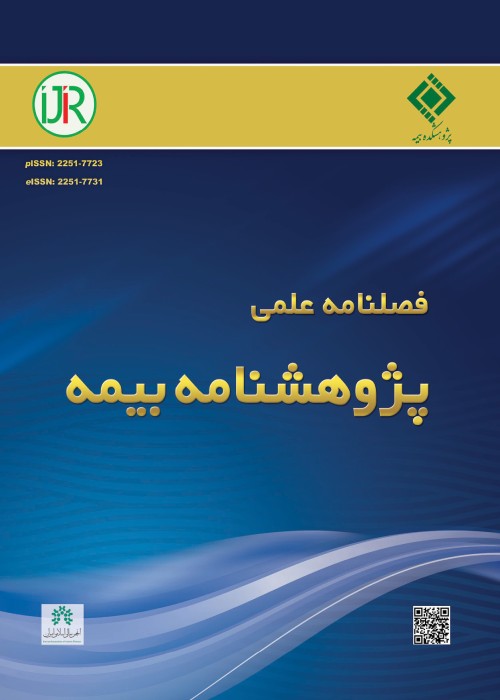Predicting people's health insurance costs using machine learning and ensemble learning methods
Author(s):
Article Type:
Research/Original Article (دارای رتبه معتبر)
Abstract:
BACKGROUND AND OBJECTIVES
The healthcare insurance industry faces a significant challenge predicting individuals' insurance costs, which are based on complex parameters such as age and physical characteristics. Insurance companies categorize policyholders into high-risk and low-risk groups to manage risks and avoid potential losses. However, the accurate estimation of costs for each individual can be a daunting task. By leveraging data science and machine learning techniques, insurance companies can improve their cost estimation accuracy and better manage risks. This approach can help insurance companies to provide more accurate insurance coverage and pricing for individuals leading to higher customer satisfaction and lower financial losses.METHODS
To address this challenge, a data science and machine learning-based approach that uses ensemble learning to predict high-risk and low-risk individuals is used. The method involves several steps including data preprocessing, feature engineering, and cross-validation to evaluate the model's performance. The first step involves preprocessing the data by cleaning it, handling missing values, and encoding categorical variables. The second step generates new features using feature engineering techniques such as scaling, normalization, and dimensionality reduction. Next, ensemble learning is used to combine multiple regression methods such as logistic regression, neural networks, support vector machines, random forests, LightGBM, and XGBoost. By combining these methods, the aim is to leverage their strengths and minimize their weaknesses to achieve better prediction accuracy. Finally, the model's performance is evaluated using cross-validation techniques such as k-fold cross-validation. These techniques help to validate the model's accuracy and prevent overfitting.FINDINGS
The proposed approach achieves an AUC of 0.73 demonstrating its effectiveness in predicting high-risk and low-risk individuals.CONCLUSION
In conclusion, the healthcare insurance industry can benefit greatly from data science and machine learning-based approaches. By accurately predicting high-risk and low-risk individuals, insurance companies can better manage risks and provide more accurate coverage and pricing for their customers. This can lead to the improvement of customer satisfaction and the reduction of financial losses for insurance companies.Keywords:
Language:
Persian
Published:
Iranian Journal of Insurance Research, Volume:39 Issue: 1, 2023
Pages:
1 to 14
magiran.com/p2659010
دانلود و مطالعه متن این مقاله با یکی از روشهای زیر امکان پذیر است:
اشتراک شخصی
با عضویت و پرداخت آنلاین حق اشتراک یکساله به مبلغ 1,390,000ريال میتوانید 70 عنوان مطلب دانلود کنید!
اشتراک سازمانی
به کتابخانه دانشگاه یا محل کار خود پیشنهاد کنید تا اشتراک سازمانی این پایگاه را برای دسترسی نامحدود همه کاربران به متن مطالب تهیه نمایند!
توجه!
- حق عضویت دریافتی صرف حمایت از نشریات عضو و نگهداری، تکمیل و توسعه مگیران میشود.
- پرداخت حق اشتراک و دانلود مقالات اجازه بازنشر آن در سایر رسانههای چاپی و دیجیتال را به کاربر نمیدهد.
In order to view content subscription is required
Personal subscription
Subscribe magiran.com for 70 € euros via PayPal and download 70 articles during a year.
Organization subscription
Please contact us to subscribe your university or library for unlimited access!


